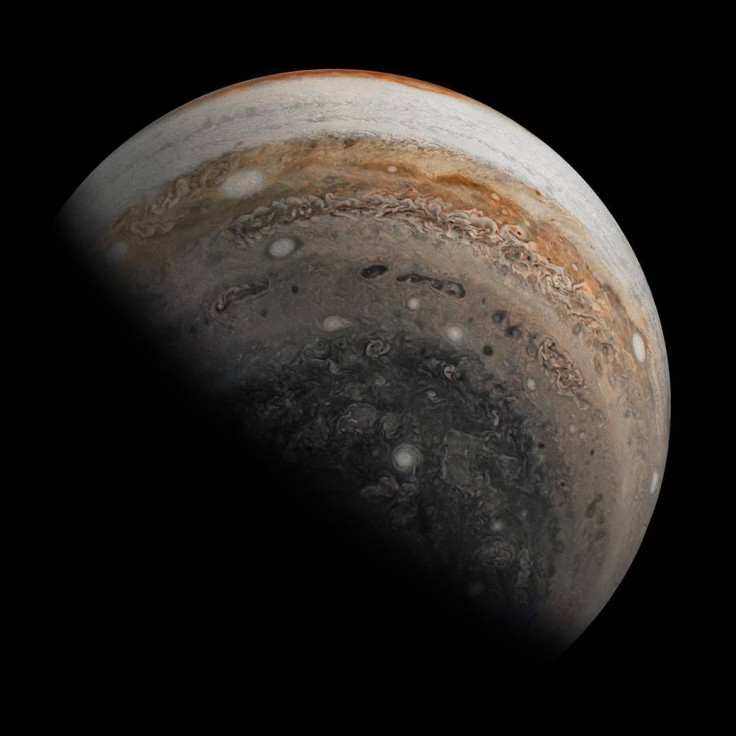Hubble's Stunning Jupiter Photo Features New Storm Plume, 'Red Spot Jr.'
KEY POINTS
- Hubble captured a new image of Jupiter and its moon Europa
- The image was taken when Jupiter was about 406 million miles away from the Earth
- It also captured a new storm that erupted on Aug. 18
The Hubble Space Telescope has captured a new image of Jupiter that shows several interesting features including the smaller cousin of the Great Red Spot and a new storm.
Hubble snaps new photos of Jupiter each year as part of the Outer Planets Atmospheres Legacy Program (OPAL), which observes changes in the clouds, storms and winds in the outer planets. This year, Hubble snapped a sharp new image of Jupiter, which, apart from featuring the planet's iconic stripes, also features the icy moon Europa beside it as a tiny white orb.
According to a NASA news release, Hubble captured the new image on Aug. 25 when Jupiter was about 406 million miles away from the Earth. The image shows interesting features including the iconic Great Red Spot, its smaller cousin dubbed "Red Spot Jr." and a storm that had just erupted days before the image was taken.
This latest image of Jupiter, taken by @Hubble_Space on 25.08.2020, was captured when the planet was 653 million kilometres from Earth.
— HUBBLE (@HUBBLE_space) September 17, 2020
Credit: @NASA / @ESA , A. Simon ( @NASAGoddard ), and M. H. Wong ( @UCBerkeley ), the OPAL teamhttps://t.co/9X42yEm5NO pic.twitter.com/NZhZUD1lM3
In the image, one can see the iconic Great Red Spot, the gigantic storm in shades of red, with the core and outer bands having the richest reds. Although NASA notes that the Great Red Spot is shrinking in size, at 9,800 miles across, it is still large enough to swallow the entire Earth, which is 7,819 miles across.
Just below the Great Red Spot is Red Spot Jr., which looks rather like the Great Red Spot but is smaller and is whitish in color.
Red Spot Jr. was originally white in color but changed to red in 2006. In the years that followed, it started fading as though it was changing back to its original white color but, the new image showed it might be turning reddish again, as it did in 2006, the NASA release said.
"This could hint that Red Spot Jr. is on its way to turning to a color more similar to its cousin once again," the news release states.
The image also captured a rather interesting storm in the mid-northern latitudes of the planet, which could be seen as a stretch of white clouds with circular features toward its end. Since the plume erupted on Aug. 18, the image was able to capture the structures that formed because of the disturbance.
The image also featured the icy Europa to the left of Jupiter. One of the planet's 75 known moons, Europa is believed to have the potential to harbor life.
In August, NASA also shared stunning images of Jupiter captured by the Juno spacecraft, with the infrared image showing the planet's north pole looking rather like a massive pool of lava.
As the largest and one of the most iconic planets in the solar system, Jupiter has been surprising scientists since its moons were discovered as the first moons beyond the Earth. Since then, several missions have explored Jupiter and more are already in the works to study it further.

© Copyright IBTimes 2025. All rights reserved.






















